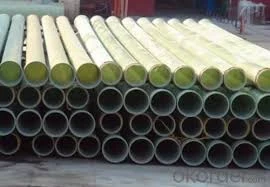
-
 Afrikaans
Afrikaans -
 Albanian
Albanian -
 Amharic
Amharic -
 Arabic
Arabic -
 Armenian
Armenian -
 Azerbaijani
Azerbaijani -
 Basque
Basque -
 Belarusian
Belarusian -
 Bengali
Bengali -
 Bosnian
Bosnian -
 Bulgarian
Bulgarian -
 Catalan
Catalan -
 Cebuano
Cebuano -
 China
China -
 China (Taiwan)
China (Taiwan) -
 Corsican
Corsican -
 Croatian
Croatian -
 Czech
Czech -
 Danish
Danish -
 Dutch
Dutch -
 English
English -
 Esperanto
Esperanto -
 Estonian
Estonian -
 Finnish
Finnish -
 French
French -
 Frisian
Frisian -
 Galician
Galician -
 Georgian
Georgian -
 German
German -
 Greek
Greek -
 Gujarati
Gujarati -
 Haitian Creole
Haitian Creole -
 hausa
hausa -
 hawaiian
hawaiian -
 Hebrew
Hebrew -
 Hindi
Hindi -
 Miao
Miao -
 Hungarian
Hungarian -
 Icelandic
Icelandic -
 igbo
igbo -
 Indonesian
Indonesian -
 irish
irish -
 Italian
Italian -
 Japanese
Japanese -
 Javanese
Javanese -
 Kannada
Kannada -
 kazakh
kazakh -
 Khmer
Khmer -
 Rwandese
Rwandese -
 Korean
Korean -
 Kurdish
Kurdish -
 Kyrgyz
Kyrgyz -
 Lao
Lao -
 Latin
Latin -
 Latvian
Latvian -
 Lithuanian
Lithuanian -
 Luxembourgish
Luxembourgish -
 Macedonian
Macedonian -
 Malgashi
Malgashi -
 Malay
Malay -
 Malayalam
Malayalam -
 Maltese
Maltese -
 Maori
Maori -
 Marathi
Marathi -
 Mongolian
Mongolian -
 Myanmar
Myanmar -
 Nepali
Nepali -
 Norwegian
Norwegian -
 Norwegian
Norwegian -
 Occitan
Occitan -
 Pashto
Pashto -
 Persian
Persian -
 Polish
Polish -
 Portuguese
Portuguese -
 Punjabi
Punjabi -
 Romanian
Romanian -
 Russian
Russian -
 Samoan
Samoan -
 Scottish Gaelic
Scottish Gaelic -
 Serbian
Serbian -
 Sesotho
Sesotho -
 Shona
Shona -
 Sindhi
Sindhi -
 Sinhala
Sinhala -
 Slovak
Slovak -
 Slovenian
Slovenian -
 Somali
Somali -
 Spanish
Spanish -
 Sundanese
Sundanese -
 Swahili
Swahili -
 Swedish
Swedish -
 Tagalog
Tagalog -
 Tajik
Tajik -
 Tamil
Tamil -
 Tatar
Tatar -
 Telugu
Telugu -
 Thai
Thai -
 Turkish
Turkish -
 Turkmen
Turkmen -
 Ukrainian
Ukrainian -
 Urdu
Urdu -
 Uighur
Uighur -
 Uzbek
Uzbek -
 Vietnamese
Vietnamese -
 Welsh
Welsh -
 Bantu
Bantu -
 Yiddish
Yiddish -
 Yoruba
Yoruba -
 Zulu
Zulu
sewage treatment fiberglass
The Role of Fiberglass in Sewage Treatment
Sewage treatment is a critical aspect of modern wastewater management, ensuring that our environmental waters remain clean and safe for humans and wildlife. Among the various materials utilized in sewage treatment facilities, fiberglass has gained prominence due to its unique properties and benefits. This article explores the significance of fiberglass in sewage treatment processes, focusing on its applications, advantages, and future potential.
Applications of Fiberglass in Sewage Treatment
Fiberglass, a composite material made from fine glass fibers and resin, is widely used in various components of sewage treatment systems. One common application is within the construction of sewage treatment tanks and clarifiers. These tanks serve as primary settings for the treatment of raw sewage, allowing solids to settle and facilitating biological processes that break down organic materials. The lightweight nature of fiberglass makes it easier to transport and install these tanks, reducing labor costs and construction time.
Moreover, fiberglass is often used in the fabrication of filtration systems, which play a crucial role in removing contaminants from wastewater. The corrosion resistance of fiberglass allows these systems to endure harsh chemical environments typical of sewage treatment facilities without suffering from degradation. Additionally, fiberglass-reinforced plastic (FRP) pipes are increasingly used in transporting effluent due to their durability and resistance to biofouling.
Advantages of Fiberglass
One of the most compelling advantages of fiberglass in sewage treatment is its durability. Unlike traditional materials such as concrete or steel, fiberglass does not rust, corrode, or degrade over time. This longevity translates to lower maintenance costs and extended operational lifetimes for sewage treatment facilities.
sewage treatment fiberglass

Fiberglass is also highly customizable, allowing for the production of parts with specific shapes and sizes tailored to the requirements of different sewage treatment processes. This flexibility ensures that plants can optimize their systems based on varying operational conditions, leading to improved efficiency and effectiveness.
Furthermore, the lightweight nature of fiberglass contributes to significant cost savings in terms of transport and installation. Workers can maneuver fiberglass components more easily, leading to expedited installation times while minimizing disruption to existing infrastructure.
Future Potential
As global populations increase and the need for efficient sewage treatment systems becomes more urgent, the role of fiberglass is likely to expand. Advances in material science and engineering are expected to yield even more robust and sustainable fiberglass products. Research into bio-based resins may pave the way for environmentally friendly fiberglass options, reducing the carbon footprint associated with sewage treatment facilities.
Moreover, the integration of fiberglass with emerging technologies, such as advanced sensor systems and automated monitoring tools, promises to enhance the performance of sewage treatment processes. This synergy can lead to improved real-time data collection and management, ultimately resulting in more efficient treatment and resource recovery options.
In conclusion, fiberglass plays a vital role in modern sewage treatment, offering a multitude of advantages that enhance the efficiency and reliability of wastewater management. As technology advances and the demand for sustainable practices grows, fiberglass’s contribution to sewage treatment is poised to increase, highlighting its importance in protecting our water resources for future generations. By leveraging the benefits of this versatile material, wastewater treatment facilities can continue to evolve in their quest for sustainability.
Latest news
-
Exploring the Benefits of Top Hammer Drifter Rods for Enhanced Drilling PerformanceNewsJun.10,2025
-
High-Precision Fiberglass Winding Machine for GRP/FRP Pipe Production – Reliable & Efficient SolutionsNewsJun.10,2025
-
FRP Pipes & Fittings for Shipbuilding - Corrosion-Resistant & LightweightNewsJun.09,2025
-
Premium FRP Flooring Solutions Durable & Slip-ResistantNewsJun.09,2025
-
Premium Fiberglass Rectangular Tanks Durable & Lightweight SolutionNewsJun.09,2025
-
Tapered Drill String Design Guide Durable Performance & UsesNewsJun.09,2025









